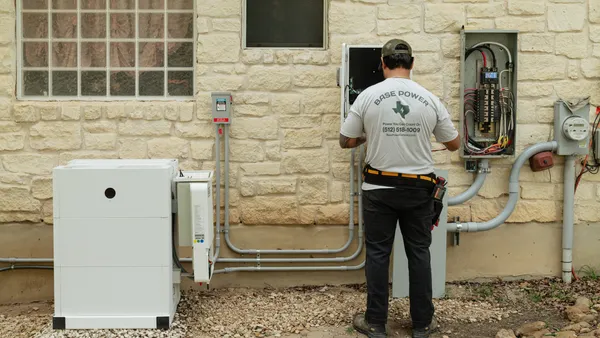Dive Brief:
- Green Mountain Power (GMP) said its residential battery storage program, rolled out last year in Vermont, saved $500,000 by reducing peak demand during the July heat wave.
- When temperatures spiked on July 5, GMP called on about 500 of Tesla Powerwall batteries to send power to the grid.
- GMP partnered with Tesla last year to offer the Powerwall 2 batteries to 2,000 customers, which could potentially help reduce peak load by 10 MW. The utility will continue to roll out the remaining 1,500 batteries in its program.
Dive Insight:
Utilities are beginning to see the impacts of recently installed grid edge technology, and a major goal of storage programs is peak demand reduction. The virtual power plant GMP is developing with Tesla is expected to save up to $3 million across the program's lifetime.
As the price of battery storage declines, residential interest has grown — particularly when combined with distributed solar. GTM Research predicts a four-fold increase in the market, with residential installations rising from 19 MW in 2017 to 74 MW this year.
GMP's customers can buy the Powerwall 2 for $1,500 or pay $15 per month, less than half the cost of a pilot the utility ran two years ago. The offering illustrates how rapidly the cost of storage is declining — a similar pilot run with Tesla's first Powerwall in 2015 cost customers $37.50/month.
According to the utility, the batteries can supply all of a home's needs for up to 12 hours and can continuously supply 5 kW, or provide up to 7 kW at peak demand.
Tesla has continued to improve its residential battery offerings. Earlier this year, the company rolled out a software update that allowed Powerwall 2 owners to optimize charging and discharging around time-varying rates. The company said it plans to triple battery deployments this year. In the fourth quarter of last year, it deployed 143 MWh of energy storage products, growing 45% over Q4 2016.












